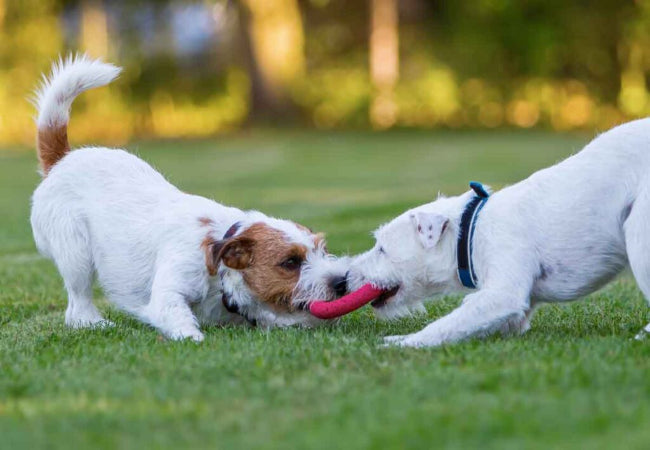Dog Play Fighting vs Aggression 2025: Vet-Approved Guide 🐶✨

In this article
Dog Play Fighting vs Aggression 2025: Vet-Approved Guide 🐶✨
By Dr. Duncan Houston BVSc
Dogs love to play, but sometimes play can look intense or even aggressive. Understanding canine body language is essential to distinguish playful behavior from true aggression, keeping both dogs and humans safe.
🎾 Signs of Play Fighting
Play fighting is a normal part of dog behavior and usually involves mutual enjoyment. Look for these key indicators:
-
Play Bow – A dog lowers its front end while keeping the hind end up, signaling a desire to play.
-
Relaxed Body and Facial Expressions – Loose, wiggly movements and soft facial expressions indicate comfort and enjoyment.
-
Role Reversals – In play, dogs take turns chasing and wrestling. If one dog always dominates, it may not be play.
-
Breaks – Playful dogs often pause or break engagement briefly, even if just for a few seconds.
-
Bite Inhibition – Bites are controlled and gentle, causing no harm to the playmate.
⚠️ Signs of Aggression
Aggressive behavior differs from play and can escalate quickly. Watch for:
-
Stiff Body Posture – Rigid, tense bodies indicate stress or intent to intimidate.
-
Direct Stares – Intense, unwavering eye contact is often a warning sign.
-
Growling or Snarling – Growling combined with bared teeth signals aggression rather than play.
-
Uncontrolled Biting – Aggressive dogs bite hard without inhibition.
-
Dominance Behavior – If one dog constantly tries to dominate with no role reversal, it may be aggressive.
-
Lack of Breaks – Aggressive interactions rarely pause or allow the other dog a moment to disengage.
🛠 How to Address Aggression
If you notice aggression, act promptly to prevent escalation:
-
Seek Professional Help – A certified dog behaviorist or applied animal behaviorist can develop a personalized plan.
-
Socialization – Gradually expose your dog to a variety of people, dogs, and environments to build confidence and appropriate behavior.
-
Training – Reinforce positive behaviors through obedience training and discourage negative behaviors consistently.
-
Avoid Triggers – Identify situations that provoke aggression and minimize exposure until your dog learns better control.
-
Exercise and Mental Stimulation – A tired dog is often calmer; regular walks, play, and puzzle toys help manage energy and stress.
-
Medical Checkup – Pain, illness, or other medical issues can trigger aggression. A veterinarian can rule out physical causes.
💡 Key Takeaways
-
Understanding canine body language is crucial for safety.
-
Play is mutual, gentle, and flexible; aggression is rigid, one-sided, and potentially harmful.
-
Intervene early if aggression is suspected, and always consider professional guidance.
-
Safe play encourages bonding, exercise, and mental stimulation, while unchecked aggression can be dangerous.
With patience, observation, and proper training, dogs can enjoy healthy, safe play while minimizing the risk of aggression.



